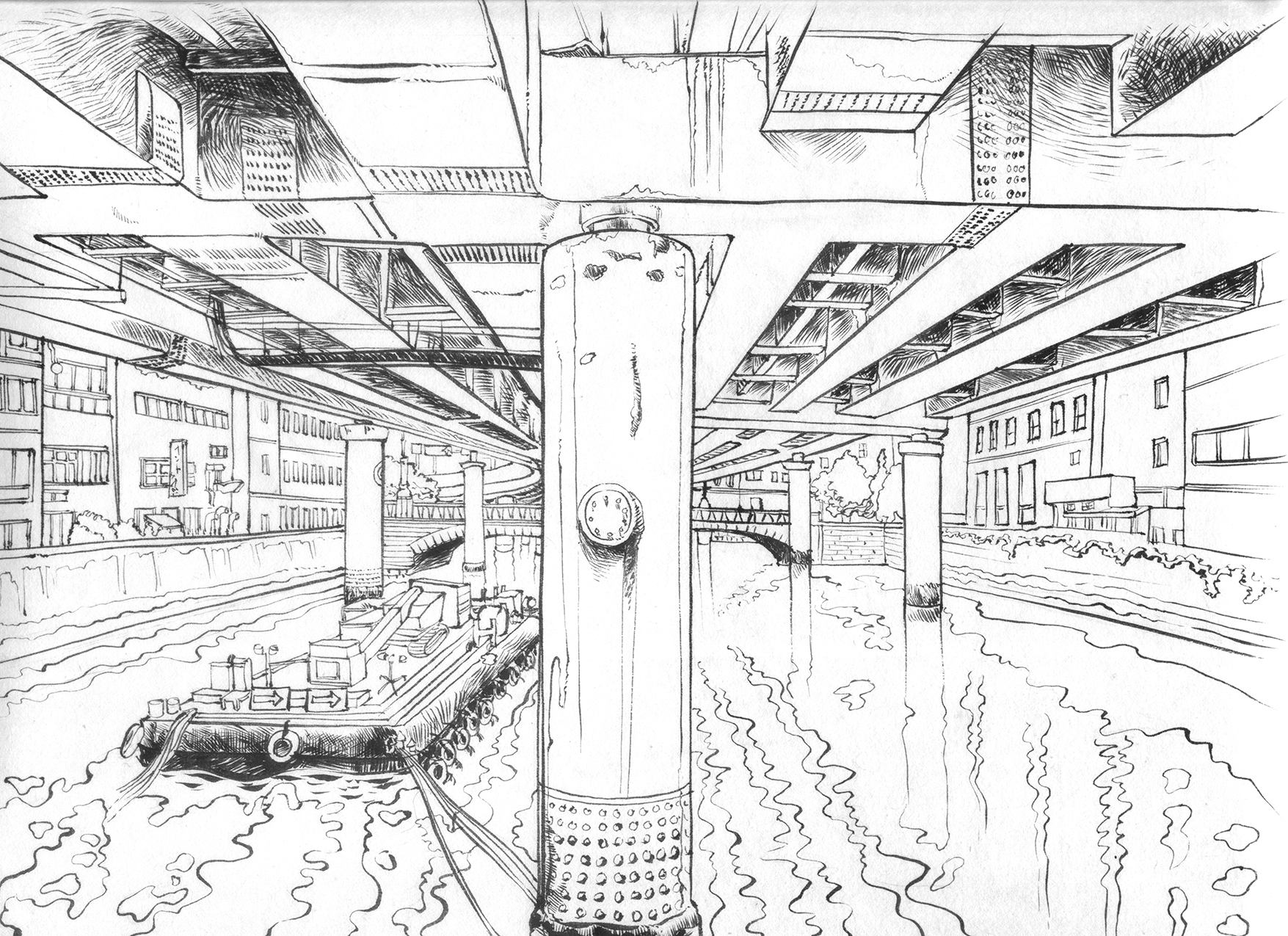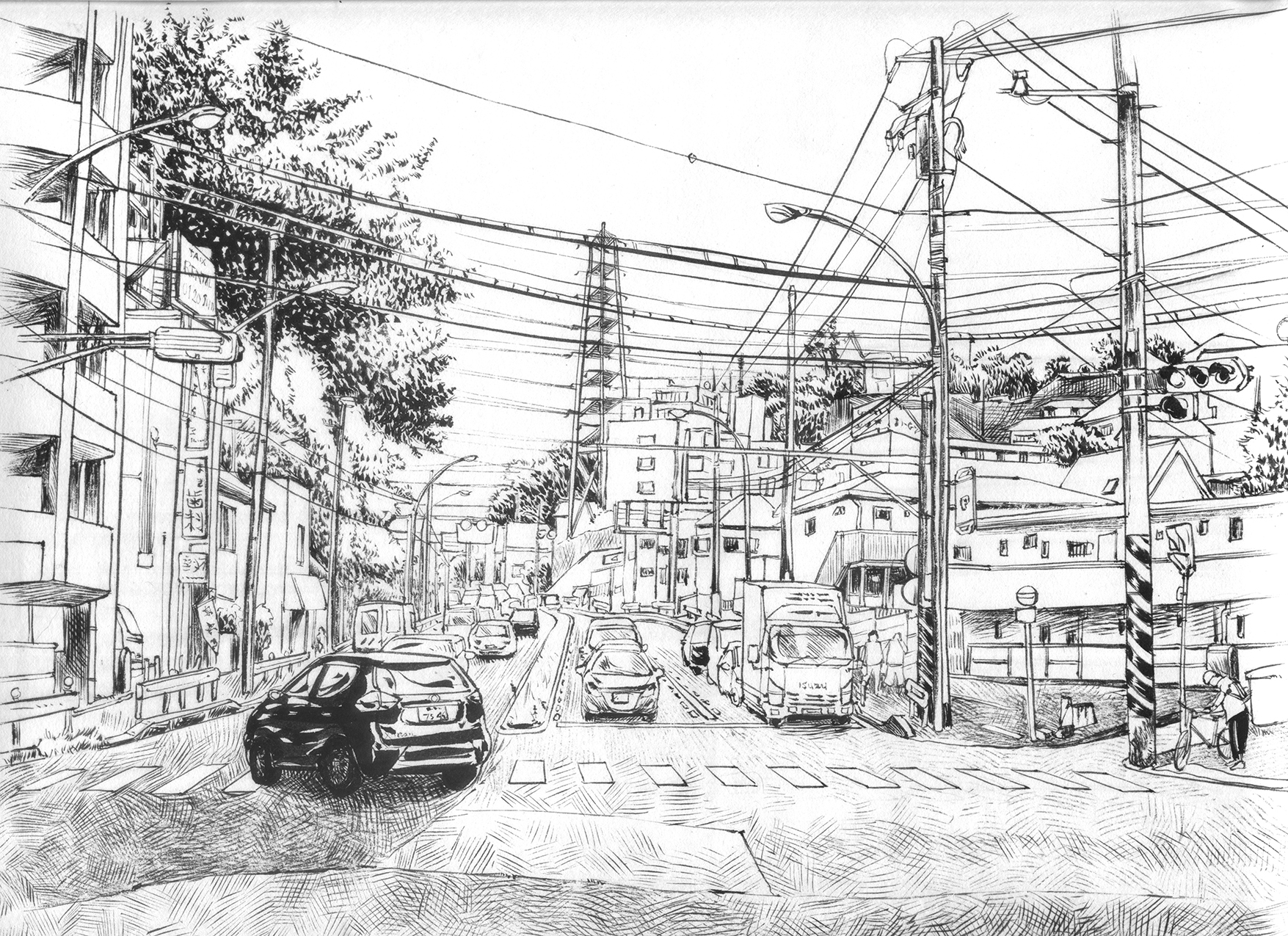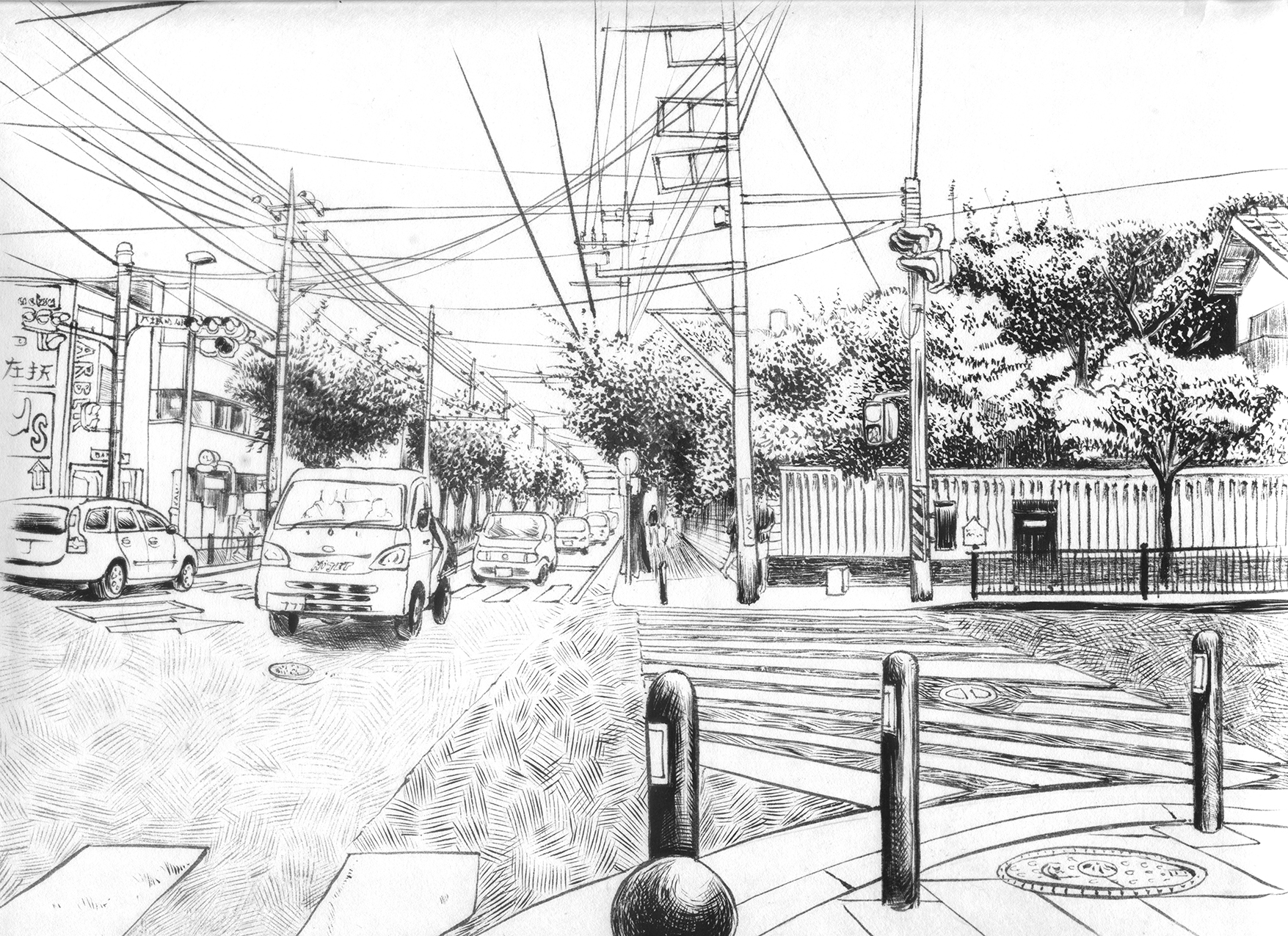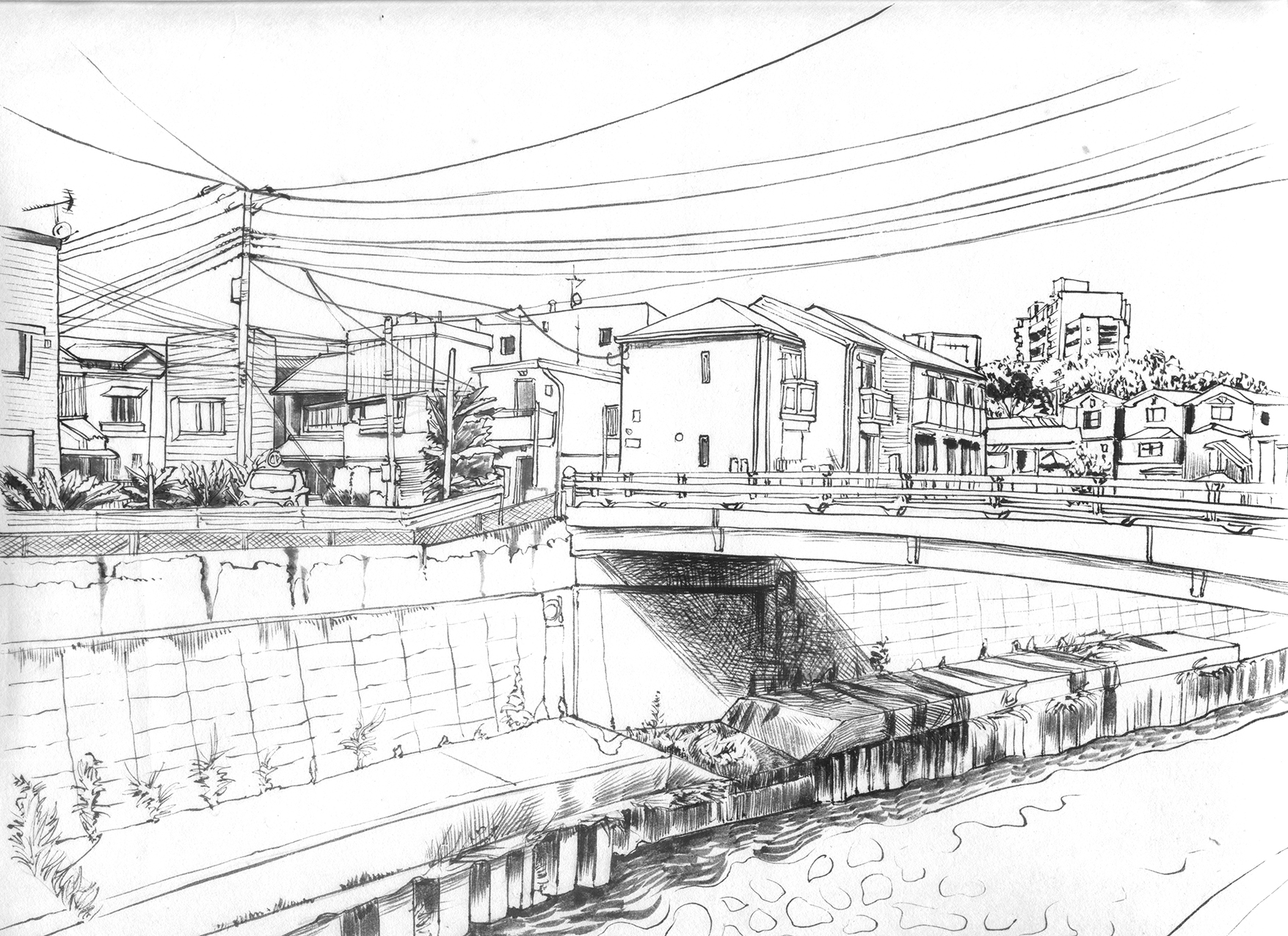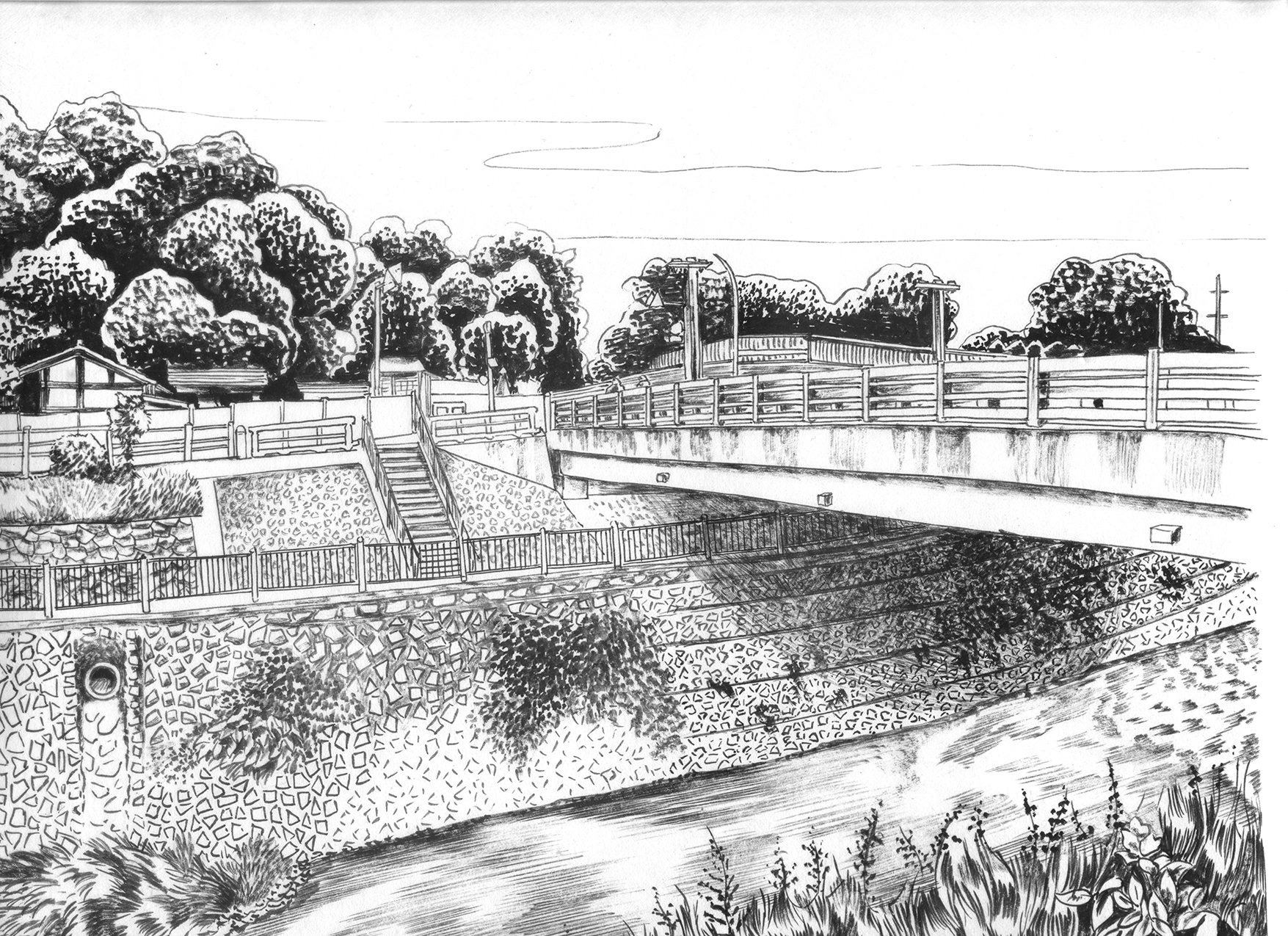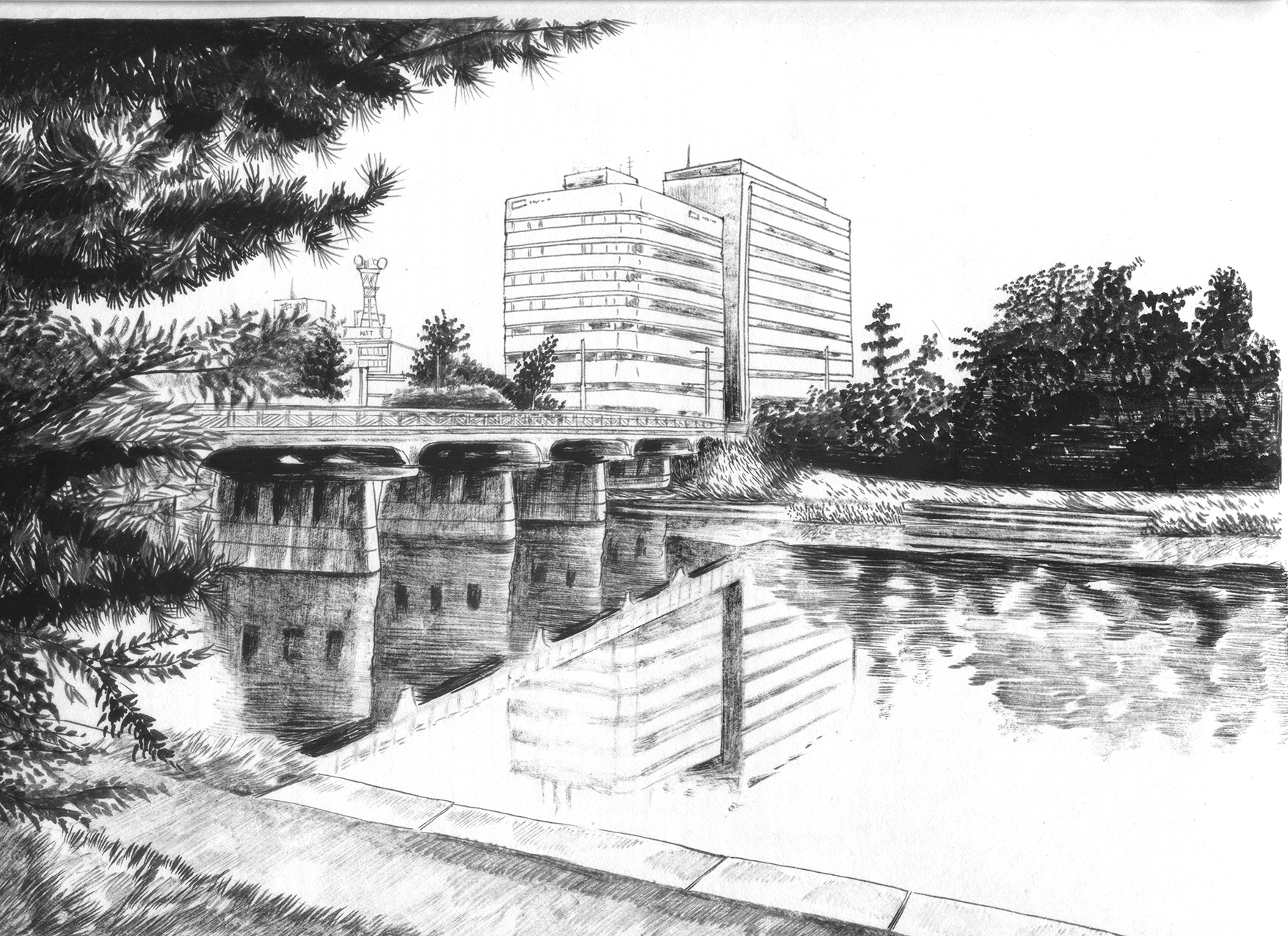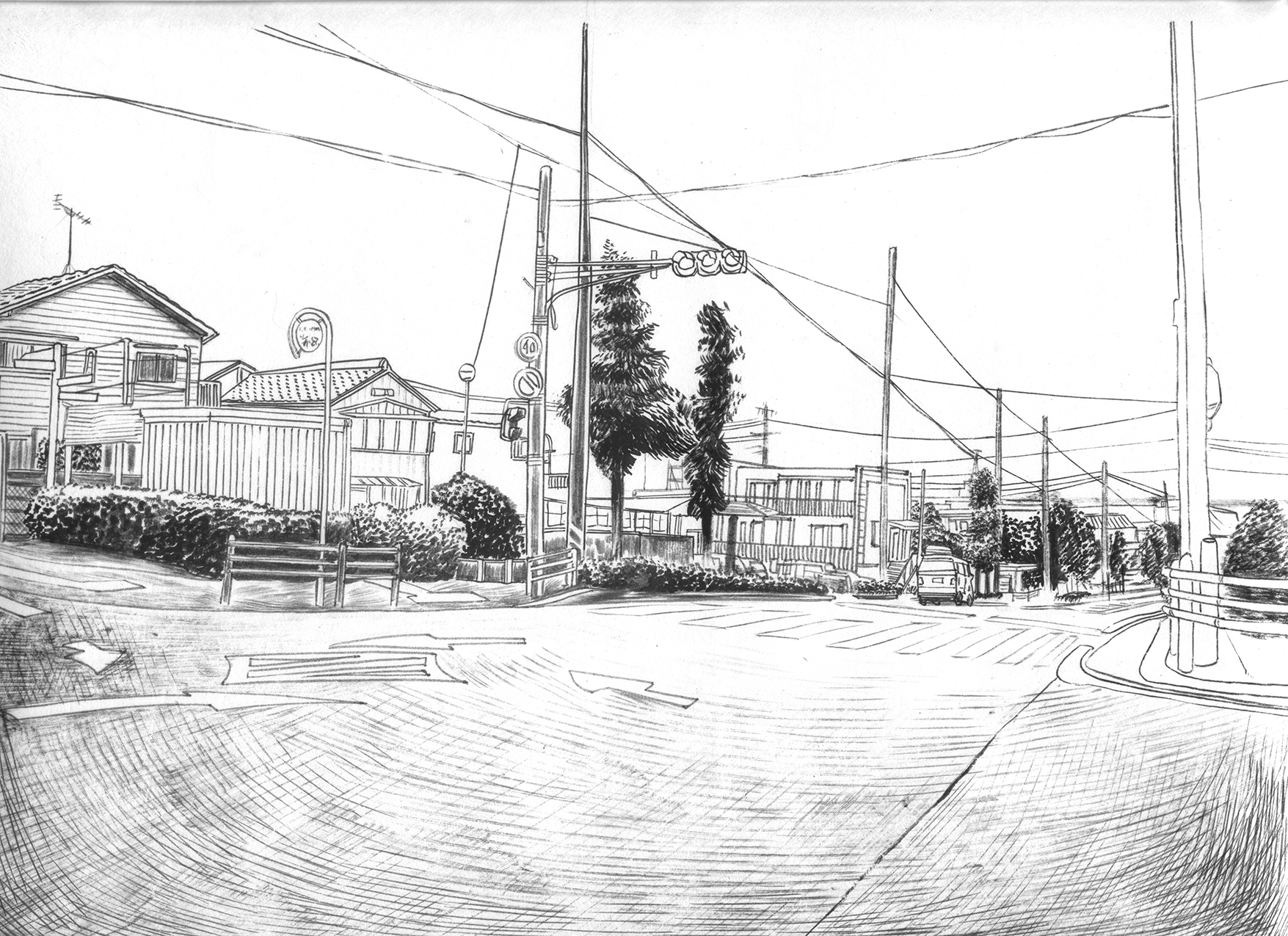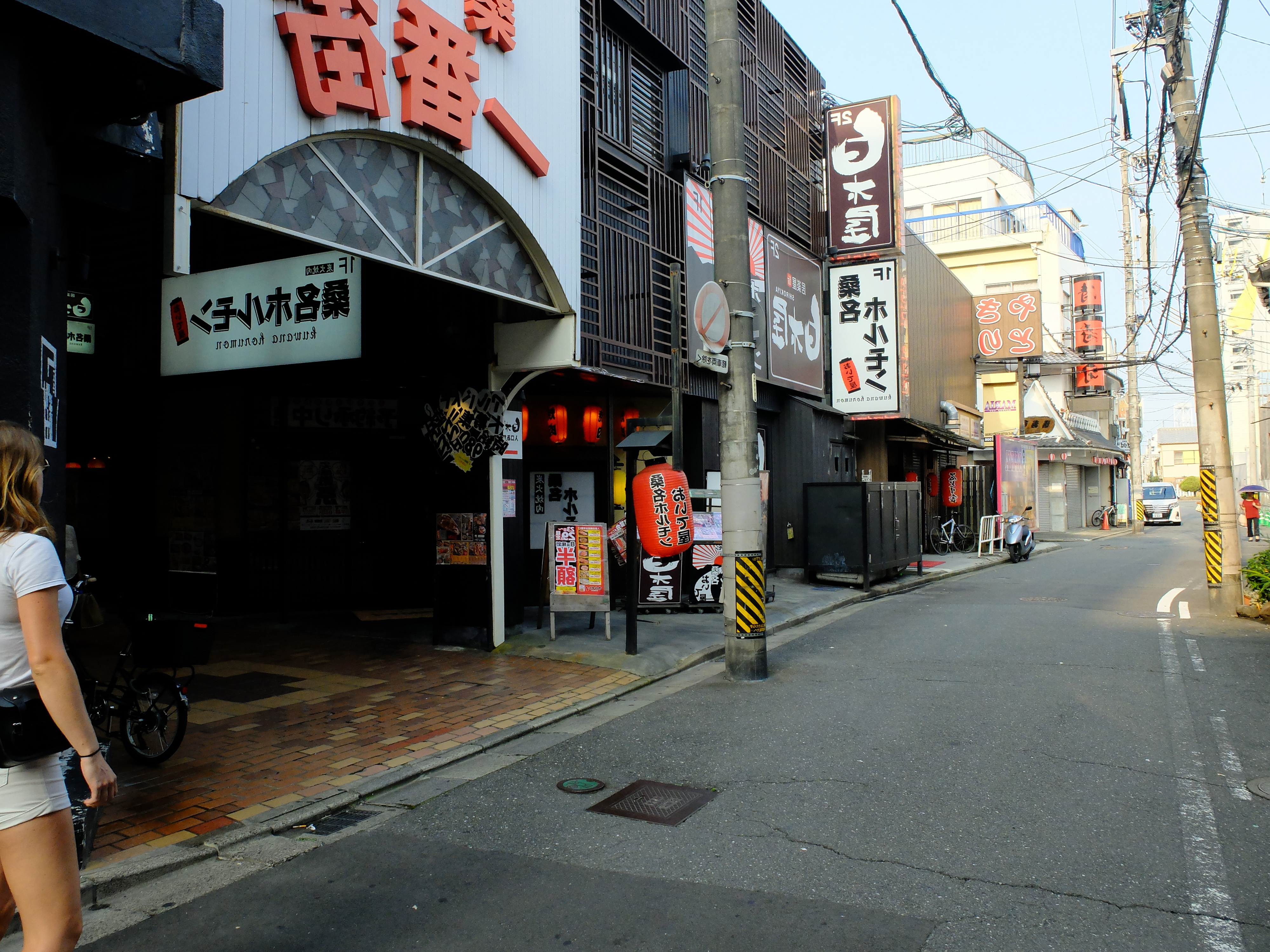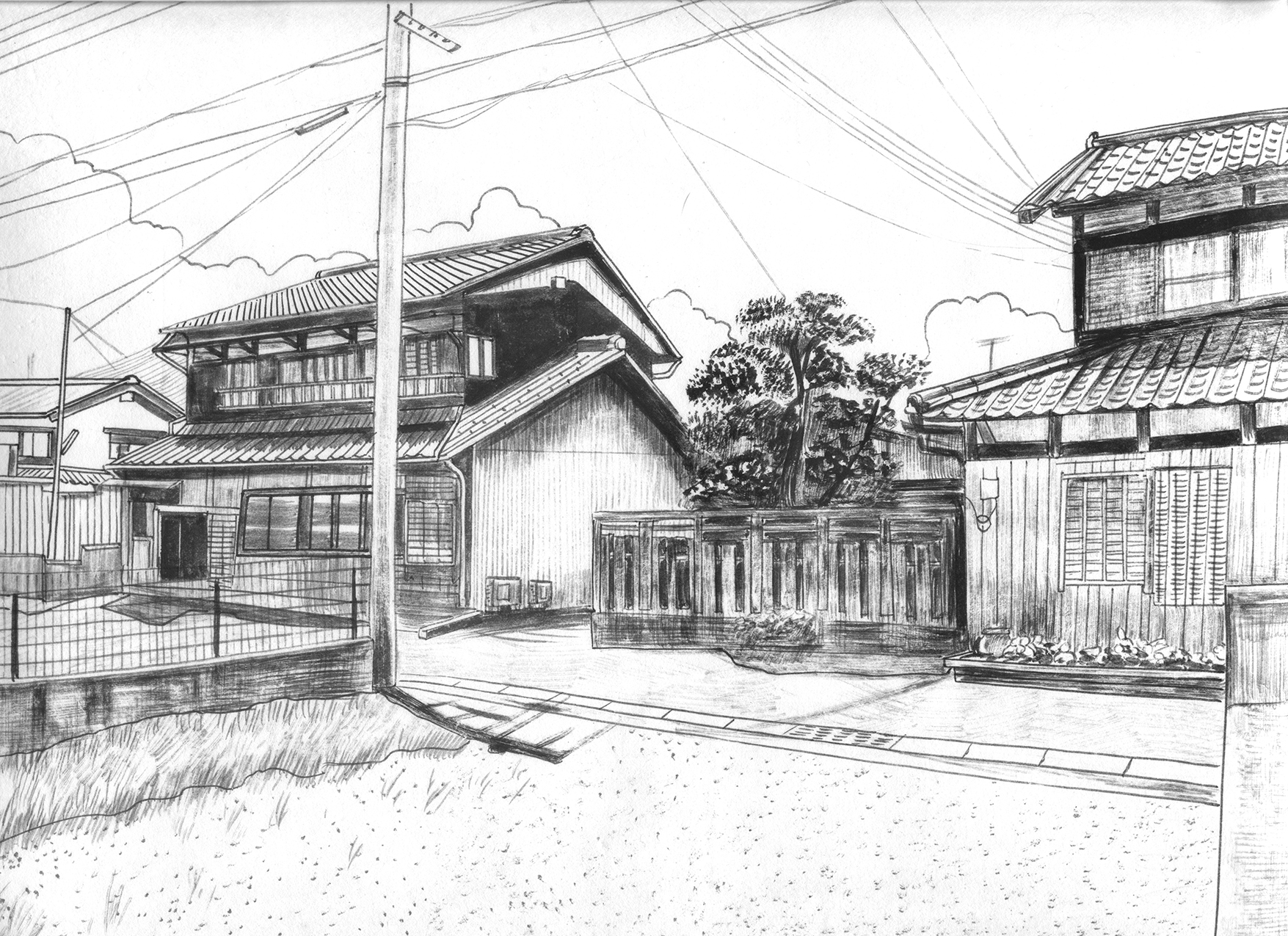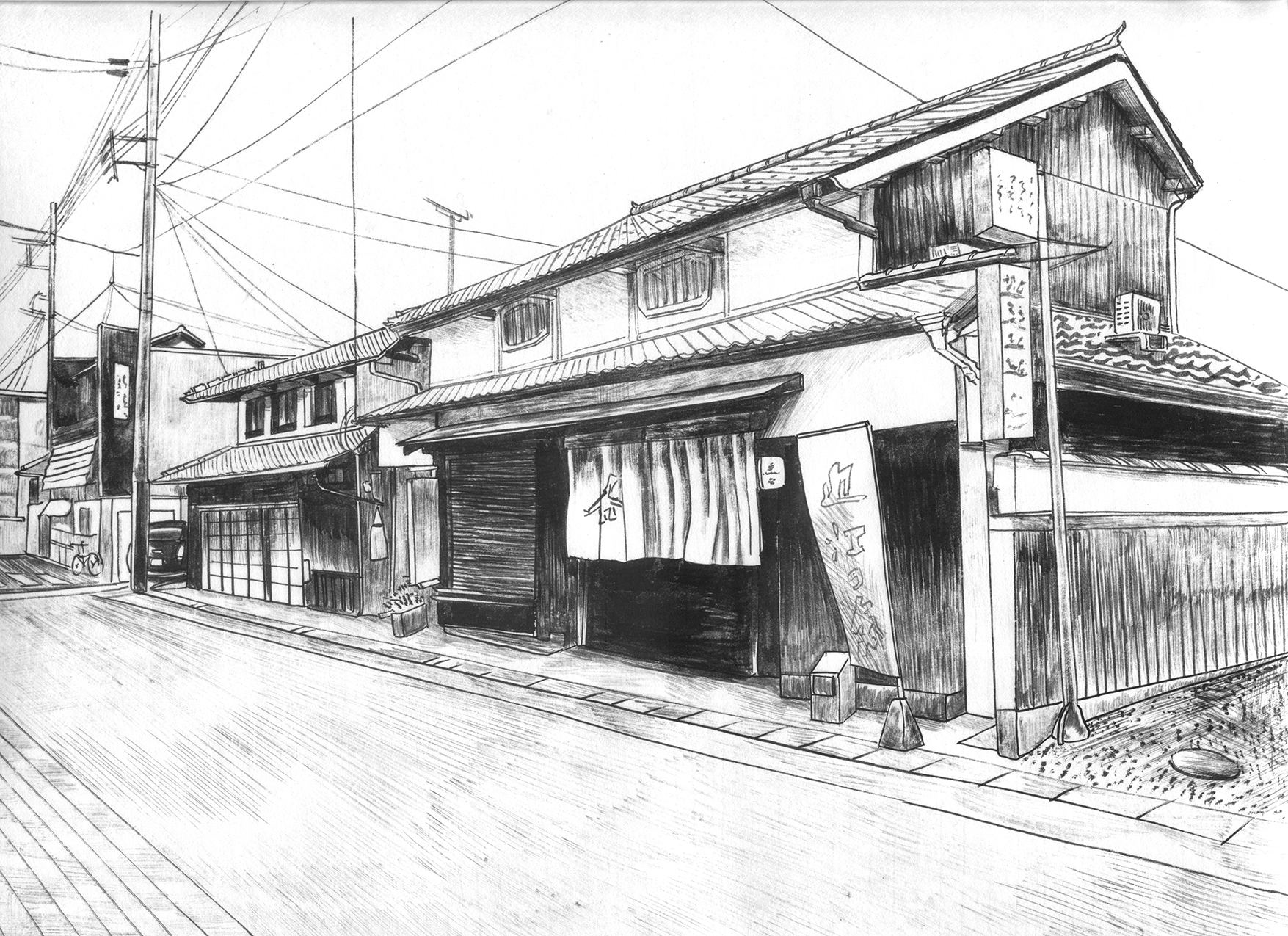M I C H I
3 x 5 6 V U E S
Vidéo, photographies, et dessins à l’encre
de chine sur papier traditionnel Washi
2016 - 2017

LA PHOTOGRAPHIE ET LA VIDEO COMME
MATIÈRES PREMIÈRES
Le voyage a permis la compilation d’une série de photos et de vidéos numériques qui constituent une matière première à l’état quasi brut, un bagage sensoriel et documentaire.
Ainsi, de ce voyage le long du Tokaido, Neotravelmakers a ramené 56 photographies et vidéos fixes qui correspondent aux 56 estampes du peintre Hiroshige.
Ces images et instants fugaces sont les témoins d’une réalité subjective, vu par des yeux exogènes à un instant T.
Elles montrent un des nombreux visages de ce territoire, en dévoilant un aspect méconnu et peu valorisé.
LE CYCLE DE DESSINS DES 56 STATIONS CONTEMPORAINES DU TOKAIDO
Le chemin parcouru a parallèlement donné lieu à une collecte d’outils traditionnels en vue de la réalisation d’un cycle de dessins représentant les différentes stations traversées (encre, pierre à encre, pinceaux, washis).
Les 56 vues ont été composées au retour du voyage, à partir de la documentation collectée sur place. Les dessins originaux noir et blanc réalisés sur papier traditionnel washi s’intègrent et se confrontent à un corpus d’images de natures variées.
Ce qui est en jeu ici, c’ est bien la mise en relation des médiums, chacun apportant sa lumière, son énergie, sa matière, et sa poésie propre.
PHOTOS
DOCUMENTAIRES ︎
ESTAMPES
D‘ HIROSHIGE ︎
DESSINS
ORIGINAUX ︎
